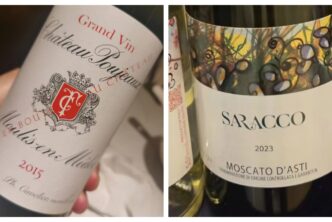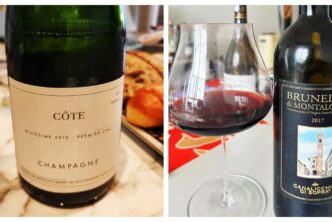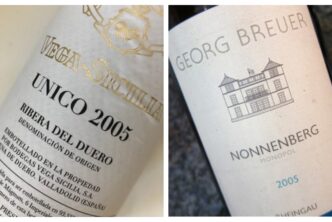Vina Polkura Syrah Secano Marchigüe Valle de Colchagua Chile 93
by Robert Millman

I recently attended a tasting of sixteen Chilean wines ranging from Patagonia in the south to Atacama in the north of Chile. This is a distance of over 1287 kilometers (or 800 miles)! Wines made from Chardonnay, Sauvignon Blanc, Cabernet Sauvignon, Pinot Noir, Carignan and Syrah were tasted. To be sure this was not a random assemblage of Chilean wines. All sixteen were terroir-based wines grown under organic farming conditions. I must say that I was impressed on the whole. There was not one wine I would not gladly drink again. Naturally a few stood out. I want to bring to the attention of Terroir Sense’s subscribers and readers an excellent Syrah from the Polkura estate in the Colchuga Valley in central Chile, about thirty kilometers from the Pacific Ocean.
The winery was established in 2002 by two wine making friends, Sven Bruchfeld and Ganzolo Munoz in a neglected property at the western end of the Cochagua valley. In 2004 they planted twelve hectares. Right from the outset, Syrah was to be the focus. The name Polkura means “yellow stone” and refers to the yellow granite spread over the underlying clays subsoil. The whole region is of volcanic origin, and rain fall is minimal, but the deep clay holds the winter rain fall well. The winery’s top wine is called Secano which means “dry” and refers to the strictly dry farming practiced over the five hectares which comprises the Secano Vineyard.
It was the 2021 vintage we tasted. I was immediately impressed with the aromatic yet restrained nose: spicy with top notes of blackberry and dark cherries and an undertone of earthy tobacco. Note however that the bacon fat of Northern Rhone Syrahs is not an aspect of this wine. Rather, this is a cool climate Syrah of notable depth and intensity but no heaviness. The tannins are tame yet abundant. It is a first-class wine of its type. It retails in the USA for about $40, an eminently fair price. Drinking Window: 2024-2030.
Podere Sabbioni 2022 Ribona della Famiglia Marche (94+)
by Ian D’Agata

Podere Sabbioni is one of those Italian winemaking gems that are teetering right on the cusp of stardom, more or less in the same position in which estates such as Trediberri and Tiberio also found themselves in about ten years ago. Massimo Carletti isn’t just passionate and hard-working, but is intelligent enough to listen and change his mindset when he realizes he was mistaken (and that in and of itself is a virtual guarantee that he will succeed at almost anything he chooses to do, not just wine). Many years ago he wasn’t quite as passionate about the Maceratino grape and the Ribona wine as he is today, but his wife certainly was. She took him to a tasting of old vintages of Ribona and it’s fair to say his eyes were opened: until that fateful evening, he hadn’t yet realized just how well the wines made with Maceratino grapes could age. Maceratino’s wines differ from those made with Verdicchio (the other Marche superstar grape but much better-known all over the world), because Maceratino’s wines have a slightly less obvious fruitiness and a more elegant austere personality, but for sure the two grapes share a disposition for ageworthiness. Suffice it to say that Carletti has championed Maceratino and It is Ribona wine ever since, and is now not so arguably the best producer of these wines in the region. And when you get to his top wine, the Ribona della Famiglia, then you are talking about one of Italy’s fifty best white wines.
The Podere Sabbioni 2022 Ribona della Famiglia is the best the estate has ever made. It may very well be the best wine Podere Sabbioni has ever made, but as I have only tasted samples of this wine when it has not yet been officially released for sale (hence my score in brackets) I will hold off on throwing myself off the proverbial limb and wait to taste it again next April when I will be visiting the winery. For now, what I can tell you is that this has a very pretty luminous pale straw-yellow colour, enlivened by green tinges. The inviting nose offers penetrating aromas of orchard fruit, lime, mint, crushed rocks, white flowers and chamomile. In the mouth, it is fresh and vibrant, with sneaky concentration, but with noteworthy elegance and complexity to its white fruit and mineral flavours. The finish is tapered and long, and boasts uncommon clarity and cut. A marvelous wine of uncommon precision, I can’t wait to taste this again in the early spring. Drinking window: 2025-2032.

 中文
中文



